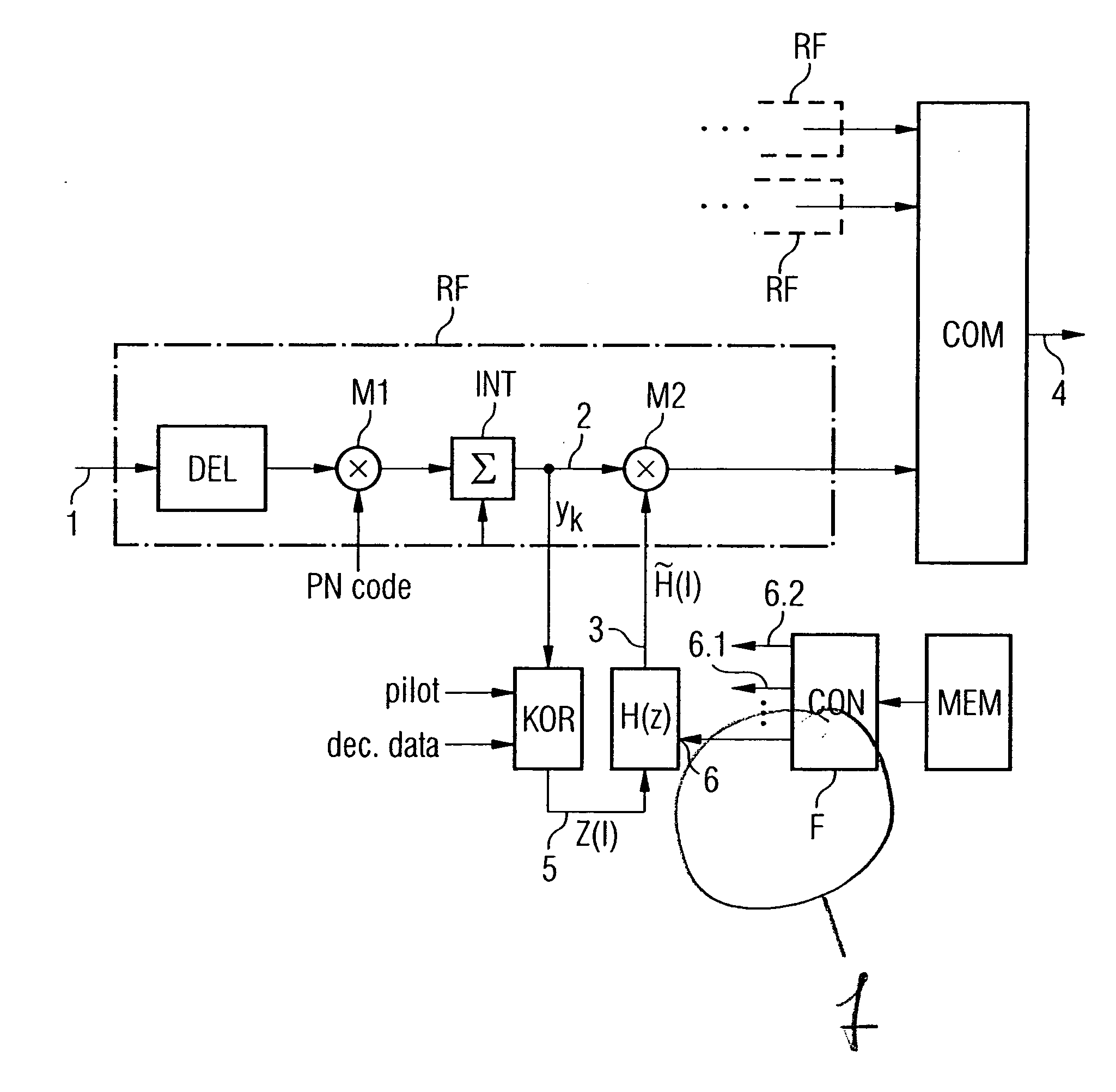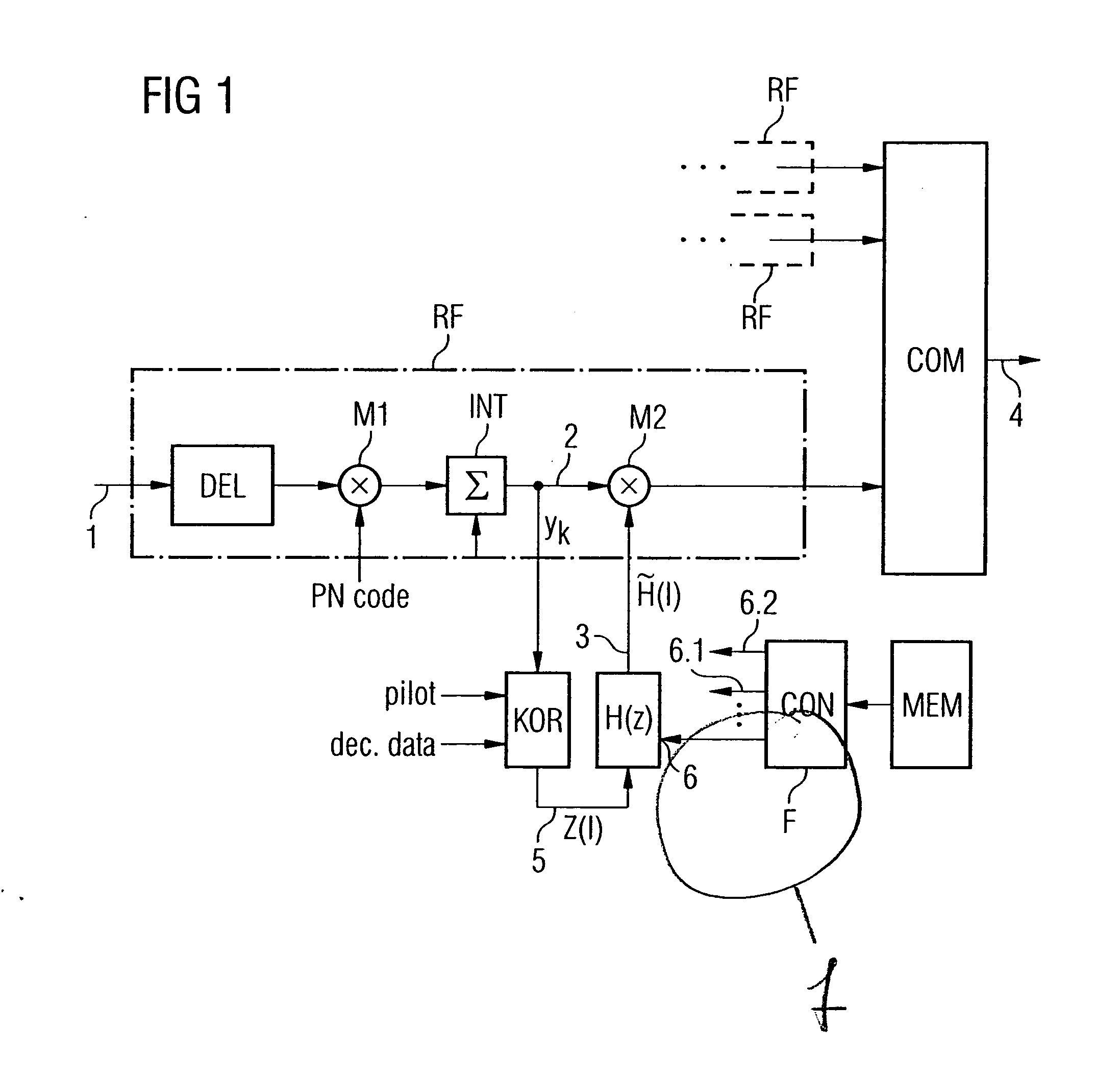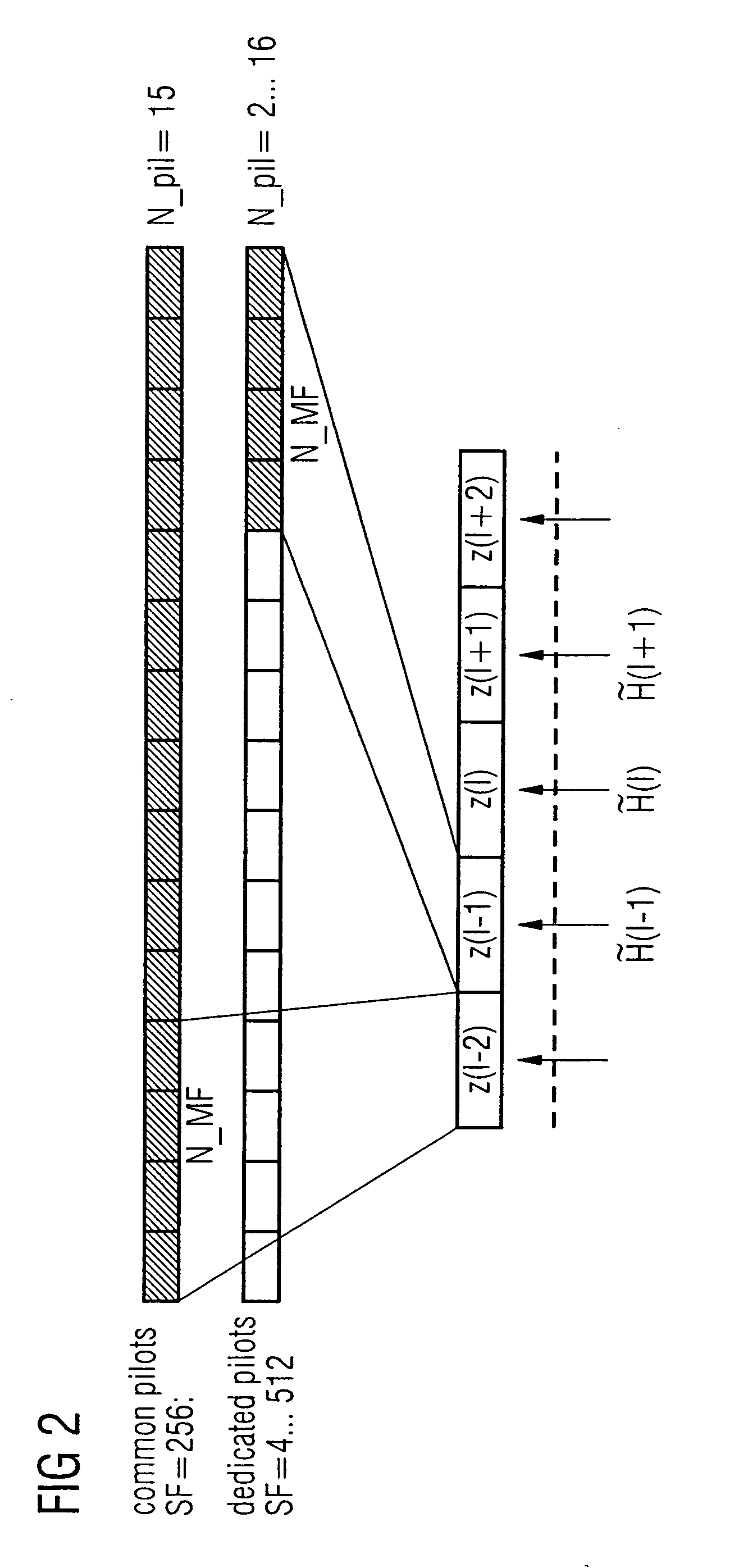Adaptive channel estimation by means of variation of the integration length during the despreading of spread-coded training symbol sequences
- Summary
- Abstract
- Description
- Claims
- Application Information
AI Technical Summary
Benefits of technology
Problems solved by technology
Method used
Image
Examples
Embodiment Construction
FIG. 3 once again shows the conventional estimation method based on a block diagram which is more schematic than that shown in FIG. 1. While the previous text has referred only in general terms to spread coding and decoding, this is in practice intended to mean so-called channelization codes (for channel identification) and scrambling codes (for base station identification), with the former often being referred to, in a generalizing manner, as spread codes. A received chip data sequence rk(i) is accordingly first of all passed to a scrambling code correlator 11, and then to a channelization code correlator 12. The two correlators 11 and 12 correspond to the correlator M1 in FIG. 1. The despread chip data sequence is then passed to the integrate and dump unit 13, to which the spreading factor SF is applied, and an integration process is carried out in a corresponding manner over SF chips (corresponding to INT in FIG. 1). The process of correlation with the complex-conjugate training ...
PUM
 Login to View More
Login to View More Abstract
Description
Claims
Application Information
 Login to View More
Login to View More - R&D
- Intellectual Property
- Life Sciences
- Materials
- Tech Scout
- Unparalleled Data Quality
- Higher Quality Content
- 60% Fewer Hallucinations
Browse by: Latest US Patents, China's latest patents, Technical Efficacy Thesaurus, Application Domain, Technology Topic, Popular Technical Reports.
© 2025 PatSnap. All rights reserved.Legal|Privacy policy|Modern Slavery Act Transparency Statement|Sitemap|About US| Contact US: help@patsnap.com



